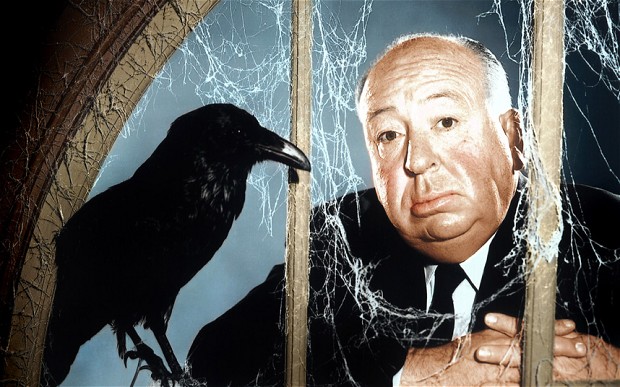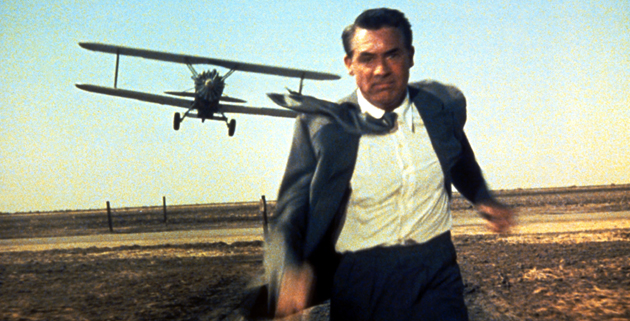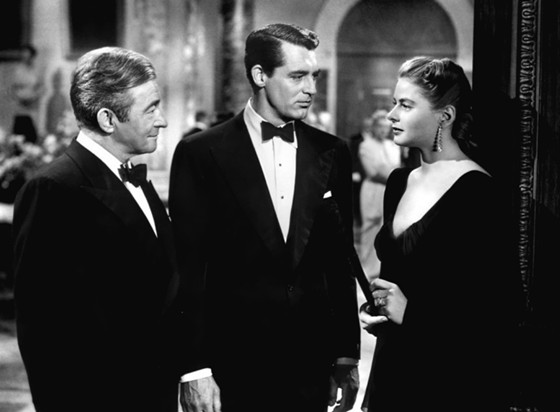
So, Alfred Hitchcock. When it comes to this subject, much is there to be said and written about the director’s many great and influential works, however, the most important element to answer in this article is:
Alfred Hitchcock still remains today a top influential film director and the most popular of golden era filmmakers among film enthusiasts, why?
Theory
Upon watching and reading about Alfred Hitchcock and his career, one can’t help but to place the success of Hitchcock’s films in the audience. In fact, the audience is one of the main keys to understand Hitchcock’s cinema since the man himself always placed a great deal of importance in the audience’s role – passive and active – as a group of participants in the film. And this remains a timeless characteristic.
Therefore, one must conclude that the main reason why Alfred Hitchcock still remains even today a top of the list name when it comes to filmmakers and golden era film directors is precisely due to the ability his films have to reach out to everyone.
And everyone means that, in theory, Hitchcock’s films have the ability to reach out to the average moviegoer looking for a great piece of entertainment and the capacity of also capturing the most demanding moviegoer’s attention (aka the cinephile, the film theorist, film student). But how?
Reasons why Alfred Hitchcock is able to capture the average moviegoer
1. Great visual storytelling

The average moviegoer, pretentiousness aside, is someone that goes to a movie theatre looking for a bit of quality time, someone who is looking for a great piece of entertainment without having to deal with enigmatic images, experimental rhythms and an altogether set of characteristics that takes the film out of the realm of pure entertainment moving it forward into the realm of art film. Thus, with that being said, storytelling comes as the natural element that immediately connects filmmaker to audience. And storytelling means literally the way the story is told.
Audiences love innovation in this field and this is the main reason why certain films had such an impact when they first came to theatres and will always remain so successful, for instance, Sidney Lumet’s “12 Angry Men” (1957) or Hitchcock’s “Psycho” (1960).
To the average moviegoer, generally speaking, images are worth more than the best written speech. And having in mind the fact that Hitchcock started out as a silent film director, naturally, he had to come up with different ways of adding information to his films, fact that ultimately lead to a constant innovation in the field of visual storytelling, which is a characteristic that the director maintained throughout his career.
There is no better justification for this view point as to ask yourself if whenever Hitchcock’s name is mentioned doesn’t a great number of images comes to your head?
Images such as the steps seen through a glass ceiling in “The Lodger” (1926), the airplane almost hitting Cary Grant in “North by Northwest” (1959) or the famous shower sequence in “Psycho” (1960).
2. Great mise-en-scène

Mise-en-scène or the group of elements that composes the ‘shot’ is something that most people don’t pay attention at when watching a film, but it is precisely the great use of all these cinematic elements – set design, costume design, lighting, space, actors, composition etc. – that helps us dive into the film and into the film’s story, sympathizing with its heroes and sometimes villains.
And even though these aspects are going to be reviewed in detail further along this article, one cannot ignore the effect that the mise-en-scène, and particularly, how Hitchcock mastered it, had in the building of a close relationship with the audience.
The mise-en-scène, naturally, can be used to achieve many effects and purposes but when it comes to the average moviegoer, there are two distinctive purposes that are of the most importance. First, the informational purpose and second, the appeal to feelings.
Hitchcock’s success resided on the way he delivered information to the audience by telling them something the character on screen didn’t already know and so naturally it produced the effect of suspense and a natural curiosity as to what’s going to happen next. On the other way, Hitchcock was also an able filmmaker when it came to using the mise-en-scène in order to build a climax and likeness for his main characters.
Who doesn’t feel bad for Lina McLaidlaw (Joan Fontaine) when Johnnie Aysgarth (Cary Grant) takes her the special glass of milk in 1941’s “Suspicion”? Who doesn’t fall in love with Alicia Huberman’s (Ingrid Bergman) and Devlin’s (Cary Grant) romance in 1946’s “Notorious”?
Or who doesn’t want to know what’s going to happen next to the murder in 1960’s “Psycho”? Especially when it happens so early in the film (50min). That’s what a great use of the mise-en-scène does to you.
3. Great themes

Hitchcock’s themes always revolve around obsession and morale explored in the form of drama and thriller films. Also noteworthy is the presence of other interesting elements, sort of sub-themes such as voyeurism, authority (policemen), death, sexuality, guilt or family (particularly, the role of mothers) and how Hitchcock made use of them to add depth to his films and build a stronger relationship with the audience.
With that in mind, the first aspect to focus in Hitchcock’s films is the importance of the ordinary man placed under extraordinary circumstances which creates an immediate closeness with the audience.
Surrounding this ordinary man (who has either is morale questioned in the presence of a mystery or a given crime scene or sees himself trapped inside his own obsessions), is a number of sub-themes hidden in little details, sub-plots or secondary characters that contribute to increase the familiarity with the plot or the likeness for the main character and the ideas/feelings he or she defends.
With that being said, we will first focus attentions on sexuality as one of the main sub-themes allied to voyeurism and the idea of the audience as a voyeur. Hitchcock’s films often deal with perversity and taboo questions (for instance, the clear homosexuality in 1948’s “Rope”) that are often hidden between the lines, Freudian symbols or in other iconic imagery. An example of this?
Notice in “Psycho”, where Norman places his hands and the way he moves them in the scene where he talks to Marion in his office while she eats the sandwiches. Also, interesting, is to observe how the director himself insists in casting the same physical type of woman in his films, the eternal source of arousal – the blonde woman (famously played by Janet Leigh, Grace Kelly, Tippi Hedren, Ingrid Bergman, Joan Fontaine, Kim Novak and Eva Marie Saint).
Another popular sub-theme is death, naturally. However, death here does not mean specifically dying or the depiction of dead bodies (for instance: “Rope” and “Psycho”), but rather a somewhat consistent and constant obsession with committing the perfect murder. Who hasn’t read or thought about how to commit the perfect crime?
Following a logical pattern, guilt is the next most important sub-theme. Guilt is the natural daughter of morale and so it appears in the director’s films under many pretences and forms. The guilt that corrupts the self, the false guilt, the search for true guilt and so on.
The use of these elements naturally increased the relationship with the audience, because these were themes of everyday life and even though Hitchcock explored them under the wraps of the studio system, hidden behind the curtains of middle class houses, motel bedrooms, benches on train stations, hotel lobbies, stores and so on.